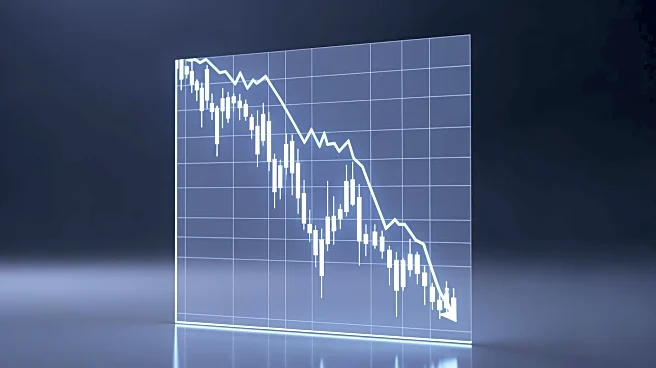What's Happening?
The National Retail Federation has projected that U.S. holiday sales will exceed $1 trillion for the first time, despite economic slowdown and geopolitical uncertainties. The forecast anticipates a retail
sales increase of 3.7% to 4.2% between November 1 and December 31, translating into $1.01 trillion to $1.02 trillion in sales. This optimistic outlook is expected to benefit leading retailers and e-commerce companies such as Amazon, Walmart, and Costco Wholesale. The forecast is more aggressive compared to other predictions, such as Deloitte's, which estimates slower growth between 2.9% and 3.4%. Additionally, import tariffs are expected to increase holiday costs for Americans by $40.6 billion during this period.
Why It's Important?
The forecasted increase in holiday sales is significant for the U.S. retail industry, indicating consumer resilience despite economic challenges. Major retailers like Amazon, Walmart, and Costco stand to gain from increased consumer spending, potentially boosting their revenues and market positions. The impact of tariffs, however, could offset some of the benefits by raising costs for consumers, which might affect spending patterns. The contrasting forecasts from different organizations highlight uncertainties in consumer behavior and economic conditions, which could influence strategic decisions by retailers and policymakers.
What's Next?
Retailers are likely to strategize around the forecasted sales increase, potentially enhancing marketing efforts and inventory management to capitalize on consumer spending. The impact of tariffs may prompt discussions among policymakers and industry leaders about trade policies and their effects on the economy. Retailers might also explore ways to mitigate tariff impacts, such as negotiating better terms with suppliers or adjusting pricing strategies. The holiday season will be closely monitored to assess actual consumer spending and its alignment with forecasts.
Beyond the Headlines
The forecast underscores the broader economic implications of consumer spending as a key driver of economic growth. It also highlights the potential influence of geopolitical factors and trade policies on domestic markets. The resilience of consumer spending amidst uncertainties may reflect underlying confidence in the economy, but it also raises questions about sustainability and long-term impacts on household finances. Retailers and policymakers may need to consider these factors in future planning and policy development.











